NYC’s Forgotten ‘War on Christmas Trees’
Discover how an obscure holiday crackdown affects festive street vendors today!


The Interborough Rapid Transit of New York City opened its first subway line in 1904. 468 stations and 24 subway lines make up the tapestry of what we now know as the New York City Subway. Here is a list of those stations that stand out as unique in both their history and appearance. The original 28 subway stations had beautiful fare control houses designed by George Heins and
Christopher LaFarge, some can still be seen at Atlantic Avenue, Bowling Green, 72nd Street and other spots. But as the subway expanded, subway station style evolved to adapt to Manhattan’s geography and evolving architectural and design styles.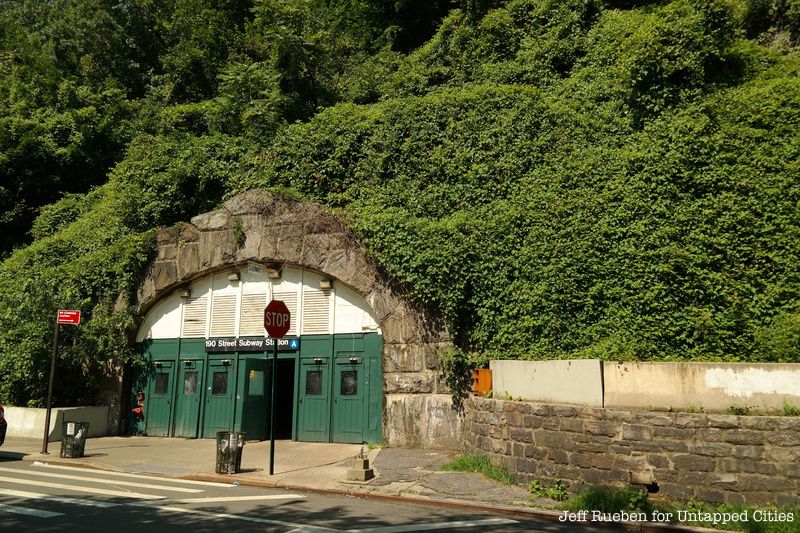
This gem of a Washington Heights subway station at 190th Street Overlook Terrace houses the A train, and is listed in the National Register of Historic Places. It is one of the last subway stations with its construction overseen by Squire J. Vickers, chief architect of the New York City Subway System from 1906 to 1942. A painter and a poet, Vickers’ style was romantic and informed by medieval Tudor architecture. The station is right next to Fort Tryon Park and the Cloisters, where history buffs can revel in medieval art and even the ruins of a turn-of-the-century mansion. The train platform is also the 2nd deepest in NYC, at 140 feet below street level!
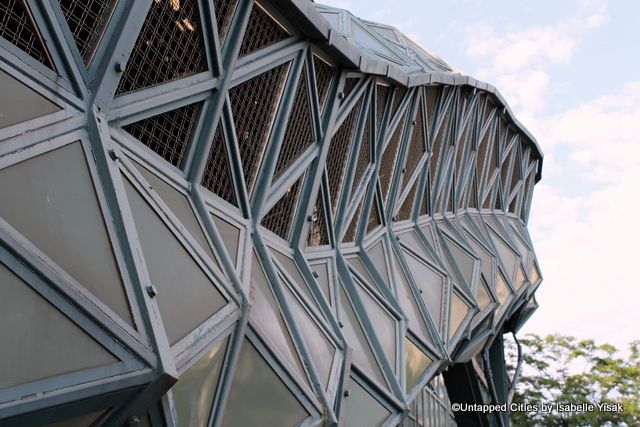
The MTA’s Arts for Transit initiative of 1985 spearheaded an ambitious project to incorporate works of art to breathe new life into the city’s crime-ridden subway. In 2005, the MTA revealed a completely new West 8th Street station at the New York Aquarium. Artist Vito Acconci worked with a team of architects to design a stunning structure made of steel, ceramic tile, and fiberglass that evokes both the infamous Cyclone roller coaster and the waves of the nearby ocean. Check out more photos here.
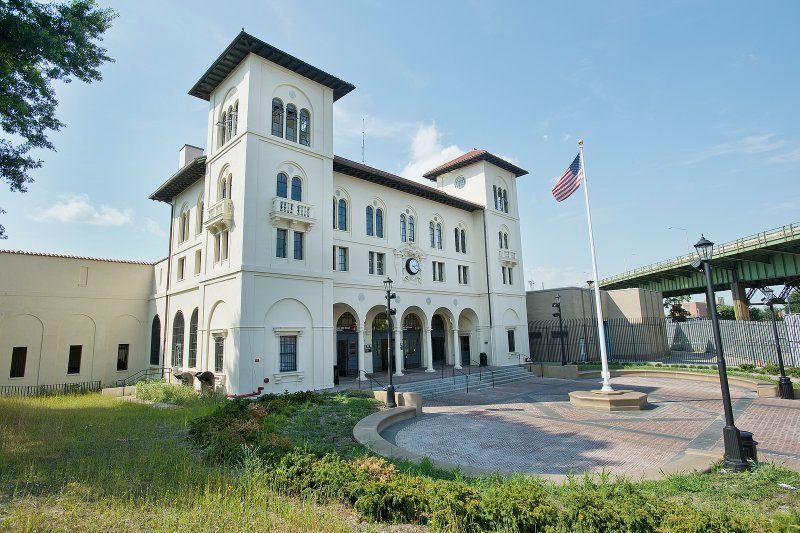 Photo by Patrick Cashin/MTA from Flickr.
Photo by Patrick Cashin/MTA from Flickr.
This station at E. 180th Street/Bronx Park, conceived by the same architecture firm that helped design Grand Central Terminal, was built in 1912. The building used to serve as a headquarters for
the old New York, Westchester and Boston Railway system.The MTA restored the station to its former glory in 2013 with a two-year $66.5 million renovation project. The building boasts a stucco, red terra cotta-tiled roof, two four story towers, and a courtyard.The building also houses employee facilities for Rapid Transit Operations, Signals and Structures. Visitors are greeted at the entrance by a plaque with the head of Mercury, the Roman god of transportation, which lives atop a vintage-inspired clock.

The Clark Street station in Brooklyn Heights opened to the public in 1919, around the same time of the establishment that it calls home: the former Hotel St. George. Finished in 1929, the St. Georges Hotel was the largest hotel in New York City at the time. Big personalities such as F. Scott Fitzgerald and Truman Capote could be seen at the hotel’s recently redisocvered Olympic-sized swimming pool, and President Roosevelt even spent his nights there during trips to NYC.
The hotel began to lose its foot traffic in the 1960s, and eventually shut down in 1995 after a fire destroyed much of the building. The building where the Clark Street subway is located now is used for student housing, but the original St. Georges Hotel sign and awning remains at the entrance. Furthermore, the former lobby of the hotel is now the subway station entrance hosting a mini mall of sorts where you can buy flowers and get a magazine.
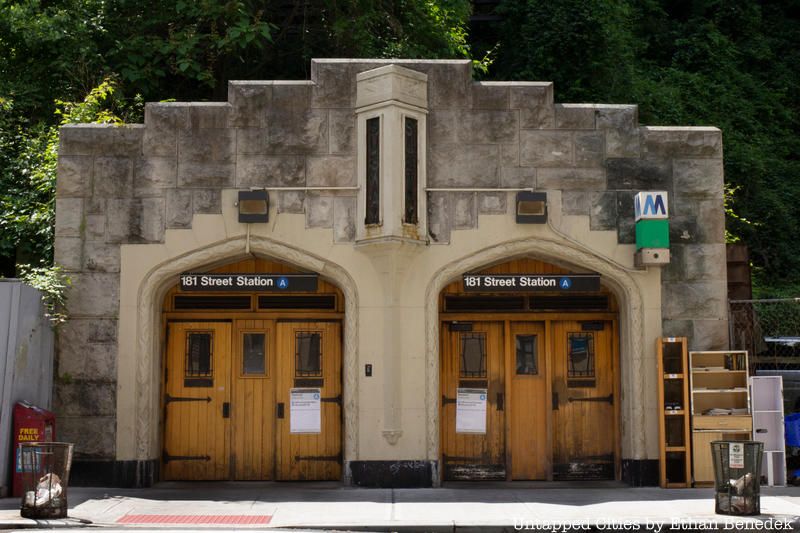
We couldn’t help but shout out Squire J. Vickers, chief architect of the New York City Subway system, twice for his amazing designs. This 181st Street station boasts an entrance that are a must-see for anyone who loves Art Deco style. Built in 1932, the station is recognized on the National Register of Historic Spaces, and is one of the many Art Deco and Tudor Style buildings in the diverse neighborhood of Fort Washington. It is also another one of the deepest train stations in the MTA system.
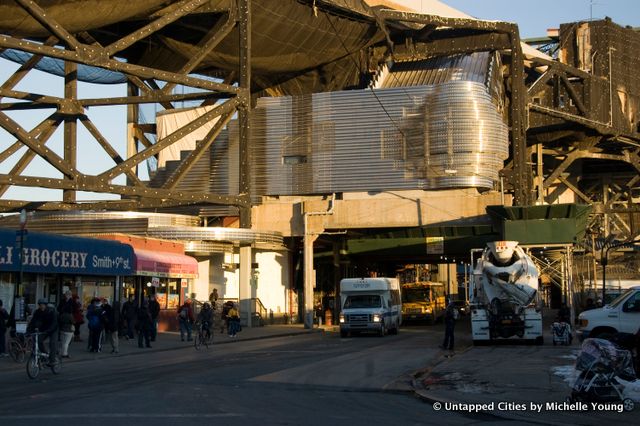
The Smith-Ninth Streets Station stands proud at 91 feet tall, the highest elevation in the MTA system. In 1933, it was constructed at this height due to laws around clearance for high-masted ships traveling across the Gowanus Canal. These ships would have carried the resources such as oil, grain, coal, and lumber important for the industrial development of the 1930s. Now, the people who brave the waters of the Gowanus include artists trying to make a statement about its dire state and modern-day explorers in Brooklyn boating clubs. Still, the recently renovated station is a sight to behold, and if you go inside, you can check out old nautical maps etched on the station’s windows.
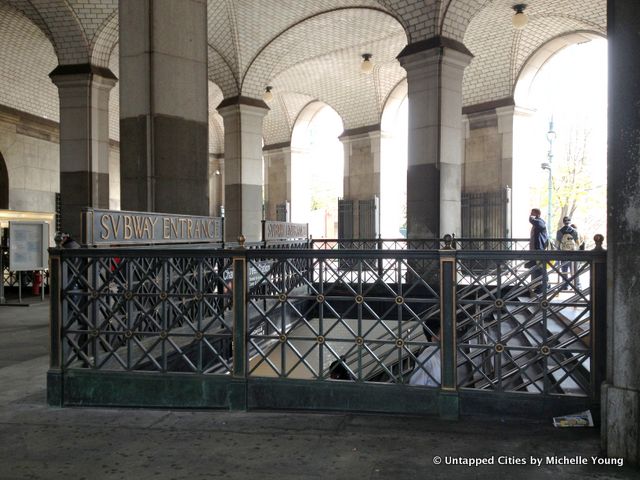
The Municipal Archives Building and this vaulted area were designed by some architectural powerhouses. McKim, Meade & White, of the former Penn Station, did the building while Guastavino did the tiling (he also did the tiling in the abandoned City Hall station and in Grand Central Terminal).

The entrance of the Bushwick Ave-Aberdeen Street station on the L train is housed between two used car dealerships. The station was built in 1928, but the two plots around it were approved for automotive sales and services in 1946.
So why haven’t these car dealerships been cleared for trendy apartments and lofts like the rest of Bushwick? Perhaps because the Bushwick-Aberdeen train station is located in a region zoned as a C8-1 Commercial District. According to the Department of City Planning, these regions are designated for “commercial and manufacturing uses that often require large amounts of land.” Uses can include “
automobile showrooms and repair shops, warehouses, gas stations and car washes.”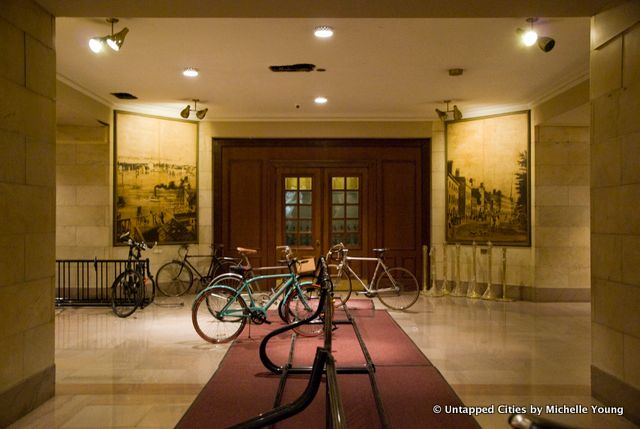
As part of the elements included in the Woolworth Building to make it irresistible to prospective tenants (just look at the cathedral-like lobby!) was the direct access to the subway. According to Woolworth Building tour guide Jason Crowley, the above red doors once led to a “passageway under Broadway to the BMT and IRT subways. The BMT is now the City Hall R stop and the IRT is the now closed off City Hall stop where the 6 turns around.That passageway was completely filled in under Broadway and no longer exists.”
Join us on our next exclusive tour of the off-limits Woolworth Building:
VIP Tour of the Woolworth Building
For more subway entrance fun, check out 14 Beautiful Vintage Subway Entrances in NYC, track the art in the subway by line, and read about the Top 12 Secrets of the NYC Subway.
We are always looking for new subway stories! Share yours with Anna Brown at her Twitter handle @brooklynbonanza.
Subscribe to our newsletter